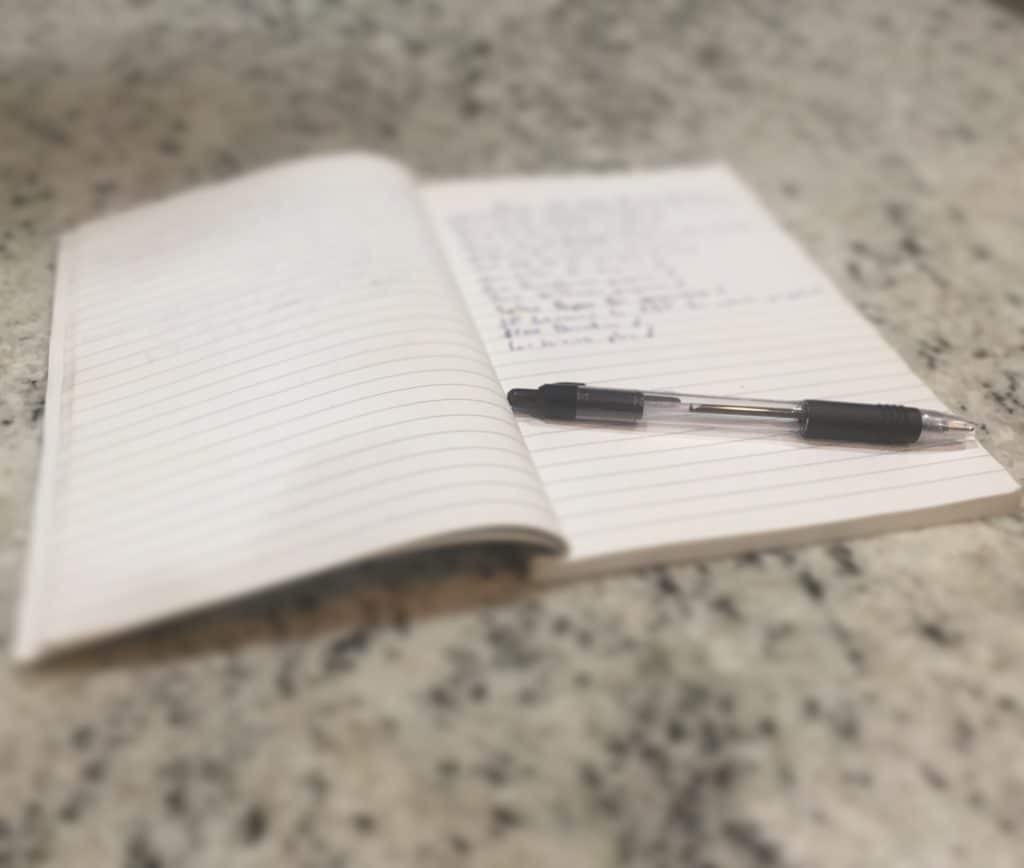It’s crazy how much life, and our ability to improve it, changes when we get quality sleep. From mood elevation to improved metabolic function, getting enough quality sleep is absolutely imperative when in the midst of transformation. (And, really, when are we not in the midst of transformation?) It’s not easy, though, we get that. How much sleep do we all really need to be our best? And just what in the hell can we do to wind down and get to sleep?
.
Before we go any further, let’s do the responsible thing. Please don’t use this advice to in anyway diagnose yourself, and if you’ve had chronic sleep issues for a long time, and have tried everything, please get some help. We are offering you some advice based on what’s worked for us and for our clients—that’s it and that’s all. Ok, onward.
.
The Sleep Test
.
 The first question to answer is, “How much sleep do I really need?” Do some internet research and you’ll quickly be overwhelmed with the amount of opinions on how much sleep you should be getting to optimize your life. Some experts say you have to nail your eight hours. Others say that you can get away with six. Extreme opinions state that you can get away with just a few hours at night with some concentrated power naps mixed in throughout the day. There’s a level of validity to most of the sleep claims you’ll find. The problem is that they don’t necessarily consider you individually—and the best way to consider your individual needs is to asses them.
The first question to answer is, “How much sleep do I really need?” Do some internet research and you’ll quickly be overwhelmed with the amount of opinions on how much sleep you should be getting to optimize your life. Some experts say you have to nail your eight hours. Others say that you can get away with six. Extreme opinions state that you can get away with just a few hours at night with some concentrated power naps mixed in throughout the day. There’s a level of validity to most of the sleep claims you’ll find. The problem is that they don’t necessarily consider you individually—and the best way to consider your individual needs is to asses them..
We have a simple test to help you figure out your individual sleep needs.
.
Our friend, colleague, and mentor Bill Hartman taught us about this simple test to help us all determine how much sleep we need. Here’s what you do:
.
The Sleep Test How to
.
First, pick a night when you know you won’t be pressed for time to wake up in the morning. If you have any inkling that you’ll be in a hurry in the morning, or that there’s something that absolutely has to be done by a certain time in the morning, don’t choose that night to do the test. Pick a night that you know the following morning is free and clear.
.
Second, figure out how to make your bedroom as dark as possible. We’re talking two miles into a Himalayan cave, bear den, dark.
.
Third, get all of the electronics out of the room. If you can’t get them all out, make sure that they’re all off and unplugged.
.
Fourth, note the time that you’re laying down to sleep so you can approximate the time that you actually fell asleep. Don’t you dare set an alarm.
.
Fifth, let yourself sleep as long as your body wants you to. No alarms—none of that stuff. Just let yourself rest until your body wakes you up naturally.
.
Sixth, note the time when you wake up and add up the hours from when you fell asleep until you woke up. That’s a decent approximation of how much sleep your body needs.
.
The Sleep Ritual
.
As silly as it may sound, sometimes we have to train ourselves to get to sleep. Just like everyone else, we used to think, “Just get yourself tired, and then you’ll be able to go to sleep.” Well, we were wrong. It doesn’t exactly work that way. Sure, being tired helps, and is kind of a pre-requisite for getting to sleep. But there are a lot of other environmental factors that affect whether or not we get to sleep, and if that sleep is quality. Developing a sleep ritual helps us create the right environment so that we can capitalize on being tired and put our bodies, and our minds, in the right place to go to sleep. Let’s walk through a few elements of sleep rituals that have helped us. Ultimately, you’ll have to experiment and decide what works for you, but these ideas should get you started down the right path.
.
 1. The Brain Dump: Mental clutter, and worrying about the things we have to get done, puts us in an anxious state that makes sleep difficult. Getting all of those potential tasks and worries out on paper, where they’ll be waiting for us to deal with them in the morning, helps us break the mental loop of anxiety driven by making sure we don’t forget what we have to do. Paper serves as a surrogate for our brain and gives us some peace of mind so we can relax. So, in the hours preceding bed, get out some pen and paper and dump all of the things that you have to do, or that are bugging you, and get them out. Then, take a few minutes to set some priorities, and then leave it be until the morning.
1. The Brain Dump: Mental clutter, and worrying about the things we have to get done, puts us in an anxious state that makes sleep difficult. Getting all of those potential tasks and worries out on paper, where they’ll be waiting for us to deal with them in the morning, helps us break the mental loop of anxiety driven by making sure we don’t forget what we have to do. Paper serves as a surrogate for our brain and gives us some peace of mind so we can relax. So, in the hours preceding bed, get out some pen and paper and dump all of the things that you have to do, or that are bugging you, and get them out. Then, take a few minutes to set some priorities, and then leave it be until the morning..
2. Clean Up Your Room: Physical clutter creates mental clutter that keeps us from relaxing. Walking into an organized room with an already made bed limits the formation of mental clutter that nags our sleep. So, your sleep ritual can actually start in the morning when making your bed after you wake up. Taking a few seconds to put things in their place before you lie down to rest could also help.
.
3. Cool Your Room Down: The body can’t rest well in warm places. Setting your thermostat to around 65 degrees will help you rest—so says the National Sleep Foundation.
.
4. Leave Everything Else Outside the Bedroom: Work, stressful situations, stressful conversations, etc., should be left out of the bed room. Our brains need to recognize the bedroom as a place of rest, so if we bring other elements of our lives into it, the association gets muffled. Reserve the bedroom for sex and sleep.
.
Let’s Get Tired!
.
Try the sleep experiment to learn about how much sleep you actually need to get, then set yourself up some kind of consistent sleep ritual so that you can actually get that sleep. The key word, especially when it comes to the sleep ritual, is consistency. Remember, we’re training the brain and body to rest. And, just as it goes with everything else, it takes a lot of exposures to train the brain and the body to make something important. Keep with it, even if at first it doesn’t seem like it’s helping. The cumulative effect will put you in a better place to relax and sleep well.
